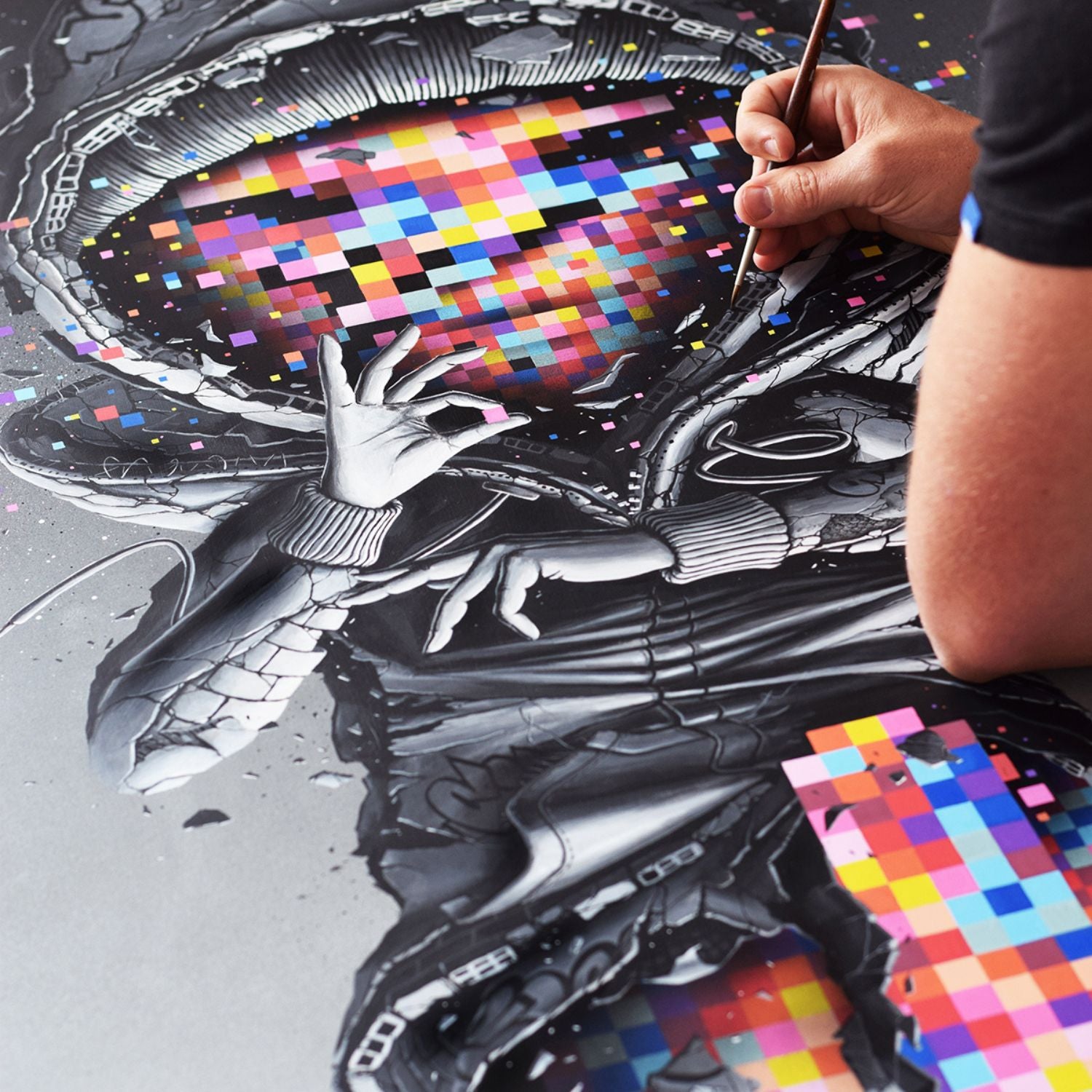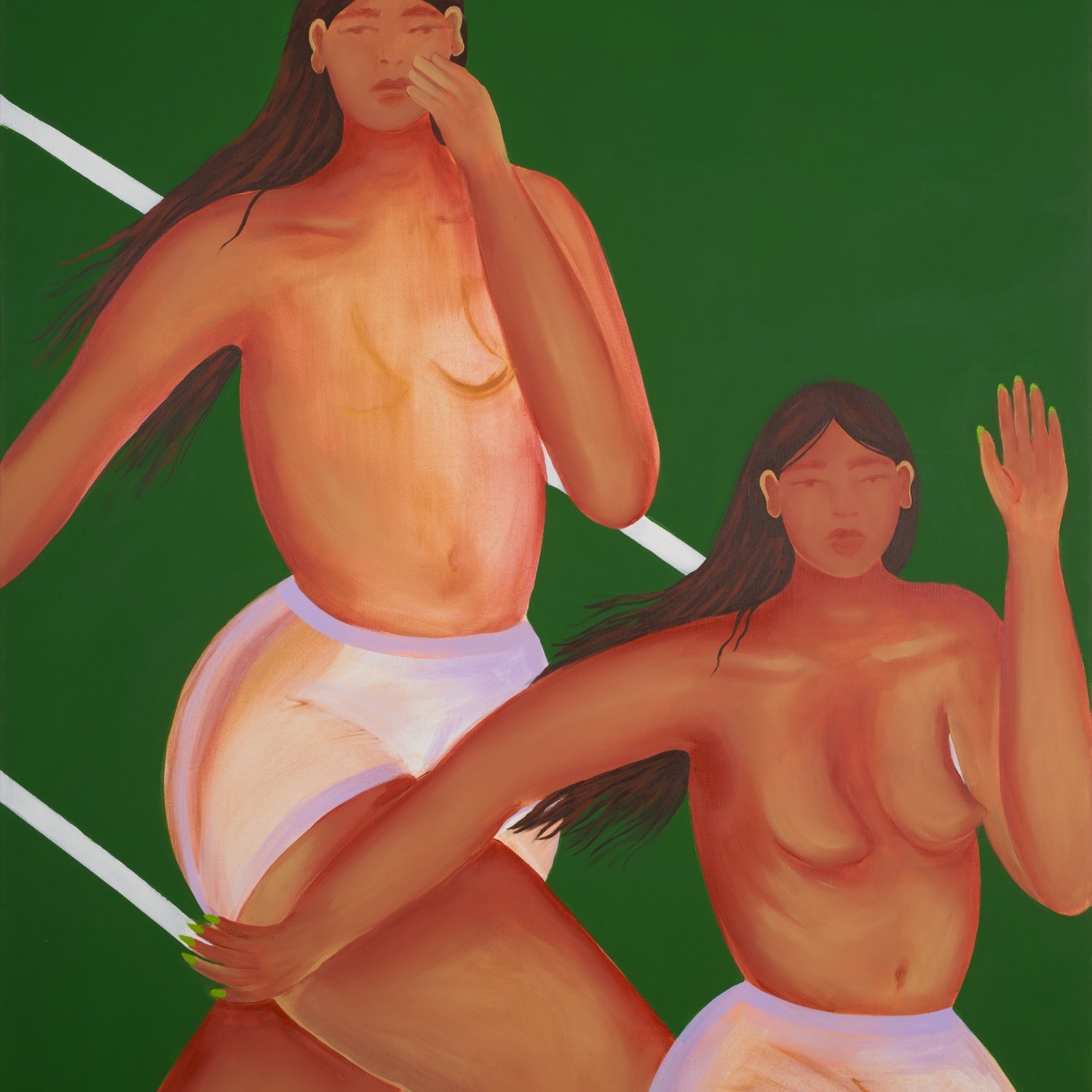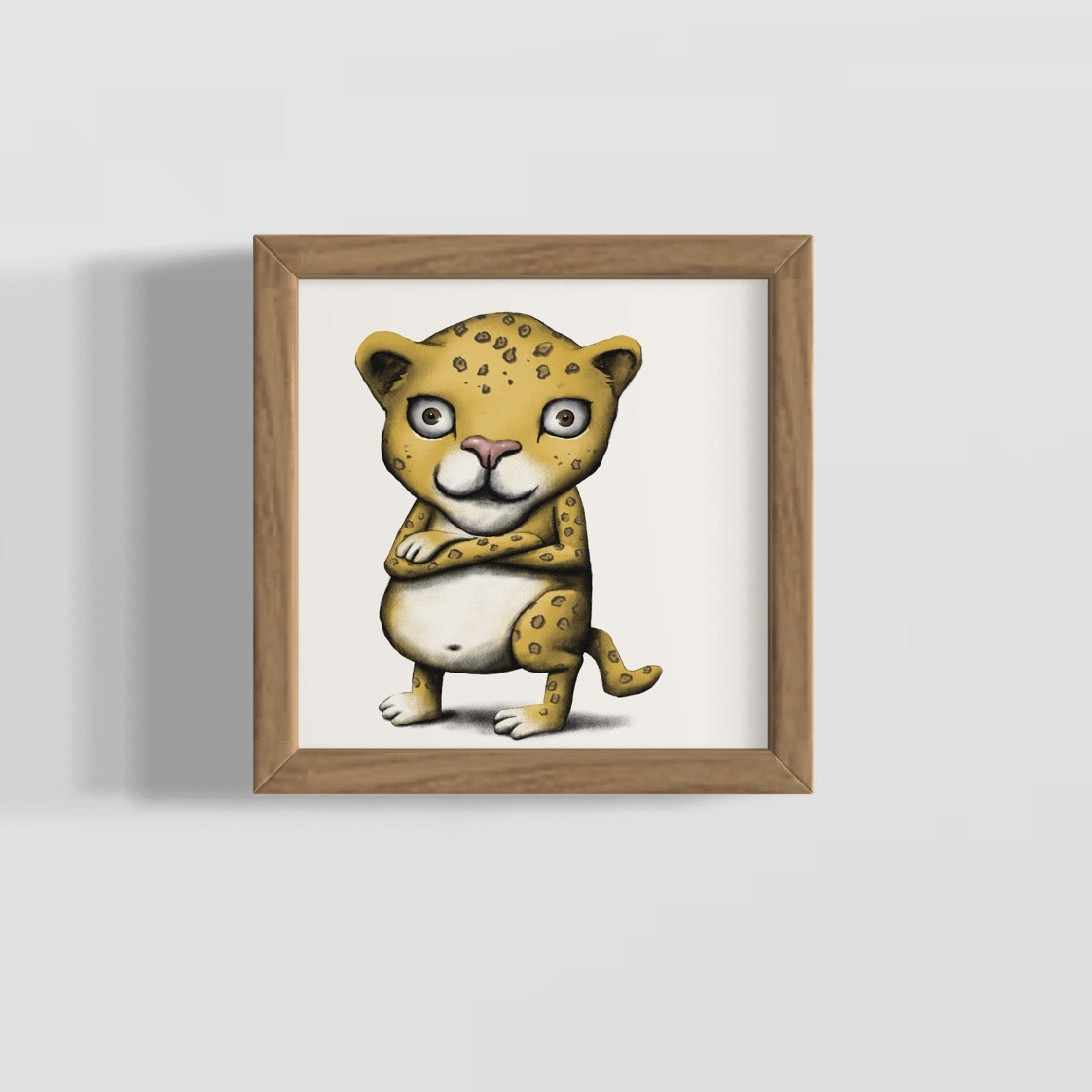

DISCOVER PEZ’S UNIQUE ARTWORKS
PEZ
French artist Pez gained notoriety for his surreal illustrations of iconic American cartoon characters in states of decay. His technical skill and detailed pen-and-ink style merges graffiti with pop and street art. Originally a graffiti writer in Nantes, Pez developed his signature aesthetic inspired by artists like Warhol, Dali, and Escher. His drawings embed modern angst in postmodern irony. Exhibited internationally, Pez’s works offer social commentary with dark humor. Blending fine art with urban art, Pez has cemented his reputation as a premier contemporary illustrator.
With a masterful blend of precision and imagination, Pez's art takes us on a journey to urban dreamscapes, where reality dances with the surreal
This collection is empty
Continue shoppingMore information about the artist
Full catalogue, private viewing or questions about the artist

Early Life and Graffiti Beginnings
Pierre Yves Riveau, known to the art world as PEZ, was born in the city of Nantes in France. From a very young age, he was drawn to the emerging hip hop culture and graffiti art scene of the 1980s and 1990s. As a rebellious teenager, PEZ started out tagging the streets of Nantes under his moniker, cutting his teeth in the graffiti world. During these formative years, PEZ was influenced heavily by the graffiti of the time, studying styles and techniques of writers near and far. He also found inspiration in the work of fellow street artists expressing themselves through stencils, wheatpastes, and sculptures.
Beyond his graffiti contemporaries, PEZ was also inspired by the surrealists like Dali, Magritte and Escher. The avant-garde work of the early 20th century surrealists resonated with PEZ's creative spirit. While continuing to learn from the streets as a graffiti writer, PEZ also admired fine artists like Klimt who mastered line, form and color. During high school, PEZ started working professionally as an illustrator. This experience allowed him to hone his technical skills and develop his unique style synthesizing graffiti and fine art. Though his street art roots stayed strong, PEZ soaked up inspiration from all styles and mediums on his journey as a young artist.

Developing a Surrealist Illustration Style
As PEZ progressed from his graffiti beginnings, he started blending aesthetics from pop art, street art and surrealism to develop his signature illustration style. His drawings took American cartoon and comic characters and placed them in dark, hyper-realistic settings reflecting decay and neglect. While recalling the pop art of Warhol, PEZ's post-modern illustrations had layers of narrative complexity with hidden details. His expert technical execution gave the work precision reminiscent of Dali's paintings.
Over the years, PEZ's illustrations evolved to take on more conceptual and thematic dimensions, engaging with contemporary issues and culture. His style matured but stayed connected to his urban art roots through incorporation of stickers, fonts and abstraction. No matter the medium of drawing, painting or mixed media collage, PEZ's body of work was united by his dark surrealism and biting humor. From the streets to the gallery, the evolution of PEZ has been monumental, establishing him as one of the most important surrealist illustrators in contemporary art. His stylistic fusion of pop, urban and fine art aesthetics has made him a highly influential international figure.
Early Life and Graffiti Beginnings
Pierre Yves Riveau, known to the art world as PEZ, was born in the city of Nantes in France. From a very young age, he was drawn to the emerging hip hop culture and graffiti art scene of the 1980s and 1990s. As a rebellious teenager, PEZ started out tagging the streets of Nantes under his moniker, cutting his teeth in the graffiti world. During these formative years, PEZ was influenced heavily by the graffiti of the time, studying styles and techniques of writers near and far. He also found inspiration in the work of fellow street artists expressing themselves through stencils, wheatpastes, and sculptures.
Beyond his graffiti contemporaries, PEZ was also inspired by the surrealists like Dali, Magritte and Escher. The avant-garde work of the early 20th century surrealists resonated with PEZ's creative spirit. While continuing to learn from the streets as a graffiti writer, PEZ also admired fine artists like Klimt who mastered line, form and color. During high school, PEZ started working professionally as an illustrator. This experience allowed him to hone his technical skills and develop his unique style synthesizing graffiti and fine art. Though his street art roots stayed strong, PEZ soaked up inspiration from all styles and mediums on his journey as a young artist.
Developing a Surrealist Illustration Style
As PEZ progressed from his graffiti beginnings, he started blending aesthetics from pop art, street art and surrealism to develop his signature illustration style. His drawings took American cartoon and comic characters and placed them in dark, hyper-realistic settings reflecting decay and neglect. While recalling the pop art of Warhol, PEZ's post-modern illustrations had layers of narrative complexity with hidden details. His expert technical execution gave the work precision reminiscent of Dali's paintings.
Over the years, PEZ's illustrations evolved to take on more conceptual and thematic dimensions, engaging with contemporary issues and culture. His style matured but stayed connected to his urban art roots through incorporation of stickers, fonts and abstraction. No matter the medium of drawing, painting or mixed media collage, PEZ's body of work was united by his dark surrealism and biting humor. From the streets to the gallery, the evolution of PEZ has been monumental, establishing him as one of the most important surrealist illustrators in contemporary art. His stylistic fusion of pop, urban and fine art aesthetics has made him a highly influential international figure.


Discover more art
Credentials
Solo Shows
2019: THE ETCHY & SKETCHY SHOW
Galerie Joseph - Paris (FR)
2018: SWEET LIFE
Hoxton Arches - London (UK)
Group Shows:
2018: POP UP SHOW
Happy Gallery - Paris FR
2018: VICE & VERTUE
Treason Gallery - Seattle US
2017: ONE & ALL
Avenue des arts - Los Angeles US
2016: THE REASONS FOR SEASONS
Stolen Space gallery - London UK
2014: DIFFERENT STROKES
Graffitiprints - New York US
2013: DIFFERENT STROKES
Graffitiprints - London UK














